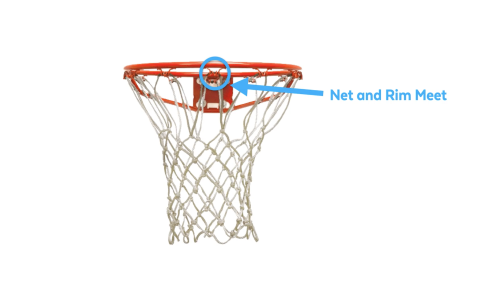# What Is 3 pt Shooting and Why Does It Matter?
Three-point shooting, often called 3 pt shooting, is the skill of making baskets from beyond the designated three-point line. In modern basketball, it’s much more than just a highlight move. Teams and players who excel in this area have reshaped the game’s strategy. According to NBA stats, teams attempt an average of 34.2 three-point shots per game in the 2023 season (来源: NBA.com). The reason? A made three-pointer delivers more value per possession and puts tremendous pressure on defenses.
The question is: How can YOU become an elite three-point shooter? Let’s break down the essentials, address common myths, and share actionable advice that works—whether you’re a player, coach, or dedicated fan.
# Understanding the Core Techniques of 3 pt Shooting
Many players believe three-point success is only about practice. While repetition helps, technique is equally critical. Key aspects include hand placement, footwork, shooting arc, and follow-through. The most consistent shooters maintain a compact form and a repeatable motion.
Let’s compare two popular shooting forms in an easy-to-scan table:
| Shooting Form | Main Strength | Potential Challenge |
|---|---|---|
| Set Shot | Quick release, good stability | Hard to use against taller defenders |
| Jump Shot | Elevates over defenders, flexible angles | Requires more leg strength, tricky timing |
Not sure which method fits you? Try recording your shot on video for feedback—it’s how many pros, like Steph Curry, refine their mechanics.
# Essential Factors That Influence Your 3 pt Shooting Accuracy
Let’s get real for a second. No player makes every three-pointer. So, what truly impacts your success rate? We’ve identified five critical factors:
– Shot selection: Are you choosing open looks, or forcing tough attempts?

– Rhythm: Shooting in stride versus stopping abruptly.
– Conditioning: Fatigue kills consistency.
– Vision: Spotting defenders, reading screens.
– Confidence: Mental strength under pressure.
Take one study from Basketball Analytics (来源: Basketball-Reference.com): Players who take most of their threes from catch-and-shoot situations shoot 6% better than those trying more off-the-dribble shots. That’s a gap worth chasing.
According to my experience coaching high school players, those willing to embrace film study and honest feedback see their percentage increase fastest. It’s not just about making shots; it’s about understanding the “when” and “why” behind each attempt.
# Step-by-Step Guide: How to Practice for Maximum 3 pt Shooting Improvement
Ready for a simple, proven routine? Here are five powerful steps you can use at any level:
1. Warm Up: Begin with 20 close-range shots to groove your form.
2. Spot Shooting: Pick five locations around the arc, and shoot 10 at each.
3. Game Simulation: Add defenders or obstacles to simulate real play.
4. Pressure Shots: Record your percentage in the final minute of practice, when tired.
5. Track Progress: Keep a notebook to chart attempts and makes weekly.
Repetition matters, but always prioritize quality over quantity. Focus on your feet, then your hands, then your eyes.
# Common Pitfalls and Mistakes in 3 pt Shooting
Here’s what you need to watch out for. Many hopeful shooters stumble due to preventable errors:
– Rushing through their motion.
– Neglecting balance, especially on step-back attempts.
– Shooting with a flat trajectory.
– Focusing too much on power, not enough on touch.
NOTICE: Avoid the trap of believing your form can’t improve. Even veteran shooters must tune their mechanics regularly. If you cling to bad habits, you’ll plateau. Seek honest feedback from coaches or teammates.
# Advanced Strategies: How Experts and Coaches Optimize 3 pt Shooting
Coaches at elite levels use video analysis, shot tracking apps, and even biomechanical testing to polish three-point skills. Some train with weighted balls to strengthen wrists, others use virtual reality for game scenario practice.
Professional shooters often use a “mental reset” after each miss. If nerves creep in, they breathe deeply and refocus on mechanics. It’s normal to feel frustrated—but the best adjust quickly.
Teams build offensive plays designed to free up shooters. Off-ball screens, drive-and-kicks, and pick-and-pop sets all raise three-point chances.
# Key LSI Keywords for 3 pt Shooting
As you build your skills, keep these related terms in mind: jump shot technique, basketball arc, shooting drills, catch-and-shoot, perimeter offense.
# Real-Life Success Story
One college player struggled with a 26% three-point percentage for two years. By recording practice sessions, prioritizing balance, and working daily on game-situation shots, she jumped to 39% in her junior year. Her coach credited disciplined routine—plus the willingness to break old habits when necessary.
# Expert Tips for Long-Term Improvement
– Analyze your misses as much as your makes.
– Practice under pressure; simulate crowd noise, fatigue, or defenders.
– Partner with a shooting coach or use modern apps for feedback.
– Periodically rest to avoid burnout, so you keep improving.
# 3 pt Shooting Checklist for Serious Players
Warm up carefully and establish shooting rhythm each session
Shoot from five distinct spots around the arc daily
Record attempts and makes for honest progress tracking
Regularly review game footage or practice videos
Train both catch-and-shoot and off-the-dribble scenarios
Address physical conditioning, focusing on core and legs
Embrace feedback from teammates and coaches
Remain mentally resilient after missed shots
Avoid common form mistakes highlighted above
Update goals and adjust training routines monthly
Ready to take your 3 pt shooting to the next level? Commit to these steps and proven strategies. Whether you’re training for the big leagues or pick-up games, mastery starts here. The best shooters never stop learning—or shooting.







































